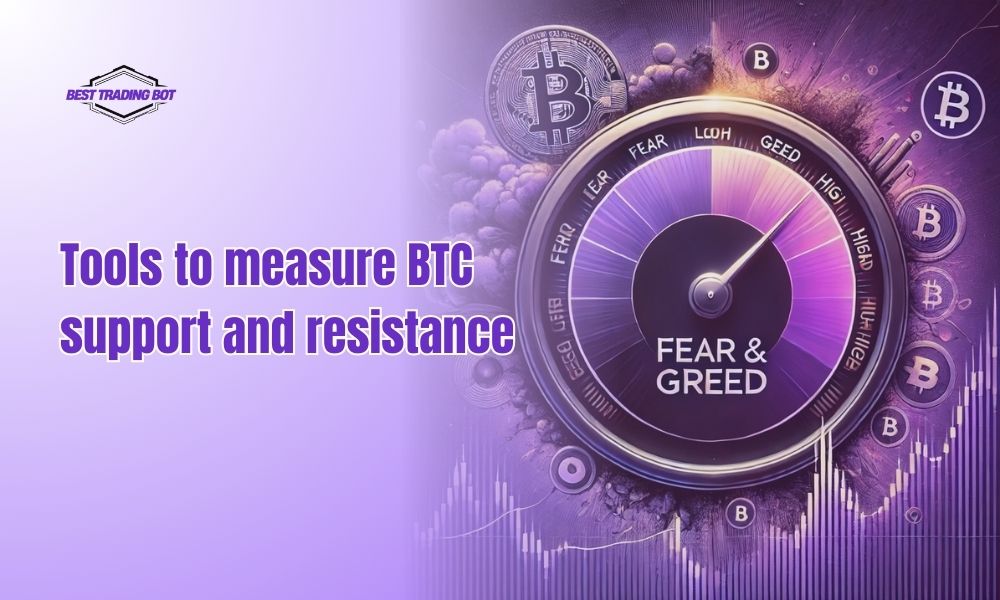Have you ever wondered why Bitcoin consistently bounces back from certain price points or struggles to break past others? The answer lies beyond charts – it’s in crowd psychology. Bitcoin support and resistance levels reflect the emotions of millions of traders, driven by fear, greed, and collective behavior. This article dives into how human psychology shapes these key price barriers and how you can use it to understand Bitcoin’s market.

Contents
- 1 How does crowd psychology influence Bitcoin support and resistance levels?
- 2 The role of FOMO and FUD in shaping price levels
- 3 Crowd psychology data: Tools to measure BTC support and resistance
- 4 Current Bitcoin price levels through a psychological lens
- 5 How to leverage crowd psychology to predict price movements
- 6 Limits of relying on crowd psychology
How does crowd psychology influence Bitcoin support and resistance levels?
In the volatile world of Bitcoin, support and resistance aren’t just technical markers – they’re psychological ones too. A support level forms when prices drop to a point where fear of further losses pushes traders to buy, creating a “floor.” Conversely, resistance emerges when prices climb, and greed or doubt prompts selling, forming a “ceiling.”
Take late 2021 as an example: Bitcoin hit a wall at 69,000 USD – not because of some magical number, but because mass profit-taking kicked in. This shows that Bitcoin price levels are shaped by collective human reactions. When millions feel the same fear or excitement, they unintentionally draw lines in the sand that prices rarely cross easily.
The role of FOMO and FUD in shaping price levels
Two emotional forces dominate Bitcoin’s market: FOMO (fear of missing out) and FUD (fear, uncertainty, doubt). FOMO strikes when Bitcoin breaks a resistance level, sparking a buying frenzy as traders rush to join the rally. Imagine early 2025, with Bitcoin surging past 82,000 USD – FOMO could drive it toward 90,000 USD in a flash.
On the flip side, FUD pulls prices back to support zones. Negative new – like a government crackdown – triggers panic selling, but as prices near a level like 75,000 USD (hypothetical for March 11, 2025), “buy the dip” mentality often stabilizes it. These emotions amplify through social media, making them critical to understanding Bitcoin price psychology.
Crowd psychology data: Tools to measure BTC support and resistance
To decode how psychology impacts Bitcoin support and resistance levels, certain tools stand out. The Fear & Greed Index is a top pick—it gauges market sentiment. Extreme fear (below 20) often aligns with strong support as buyers step in, while extreme greed (above 80) signals resistance zones.

Social media, offers real-time clues. A flood of “Bitcoin to the moon” posts might hint at FOMO nearing a resistance peak, while “crash” warnings suggest FUD testing support. Exchange data, like Long/Short ratios on Binance, also reveals crowd bias – heavy Longs near resistance, Shorts near support. These insights enhance sentiment analysis for BTC.
Current Bitcoin price levels through a psychological lens
As of March 11, 2025, let’s assume Bitcoin trades between 75,000 and 85,000 USD. The 75,000 USD support might hold because traders believe it’s a “temporary bottom,” backed by a Fear & Greed Index dipping to 30, sparking buying. Meanwhile, 82,000 USD acts as resistance, with doubt fueling sell-offs.
These Bitcoin price levels for 2025 aren’t set in stone; they shift with market mood. Tracking crowd sentiment helps spot when a support or resistance might break, giving you an edge in this psychology-driven market.
How to leverage crowd psychology to predict price movements
Want to turn crowd psychology into a trading advantage? Start by monitoring FOMO and FUD signals. A surge in optimism or a spiking Fear & Greed Index could mean Bitcoin’s nearing resistance. Bad news? Watch for support tests.
Pair this with charts. If 75,000 USD holds with high buy volume and positive X buzz, it’s a potential entry point. If 82,000 USD falters amid FUD-driven selling, consider locking in gains. Last week (March 3, 2025), a Fear & Greed drop to 20 near 75,000 USD signaled a buying window. Mastering Bitcoin trading psychology sharpens your timing.
Limits of relying on crowd psychology
Crowd psychology is powerful, but it’s not foolproof. Big players – “whales” – can manipulate sentiment with fake FOMO or FUD, tricking the masses. A fabricated rumor might crash prices despite solid support. Plus, psychology alone doesn’t replace technical or fundamental analysis. A single tweet from Elon Musk could upend crowd-based predictions overnight.
When analyzing BTC support and resistance, blend psychology with other data – like on-chain metrics or macroeconomic trends – for a fuller picture. Blind faith in the crowd can lead you astray.
Bitcoin support and resistance levels are more than numbers – they’re a reflection of crowd psychology at work. From FOMO shattering resistance to FUD reinforcing support, the market dances to the tune of collective emotions. By understanding this, you can better predict Bitcoin’s next move and navigate its wild swings. Want more crypto insights?
Follow Best Trading Bot for updates on market trends, psychology, and top picks – stay ahead of the crowd and make smarter moves in this exciting space!
